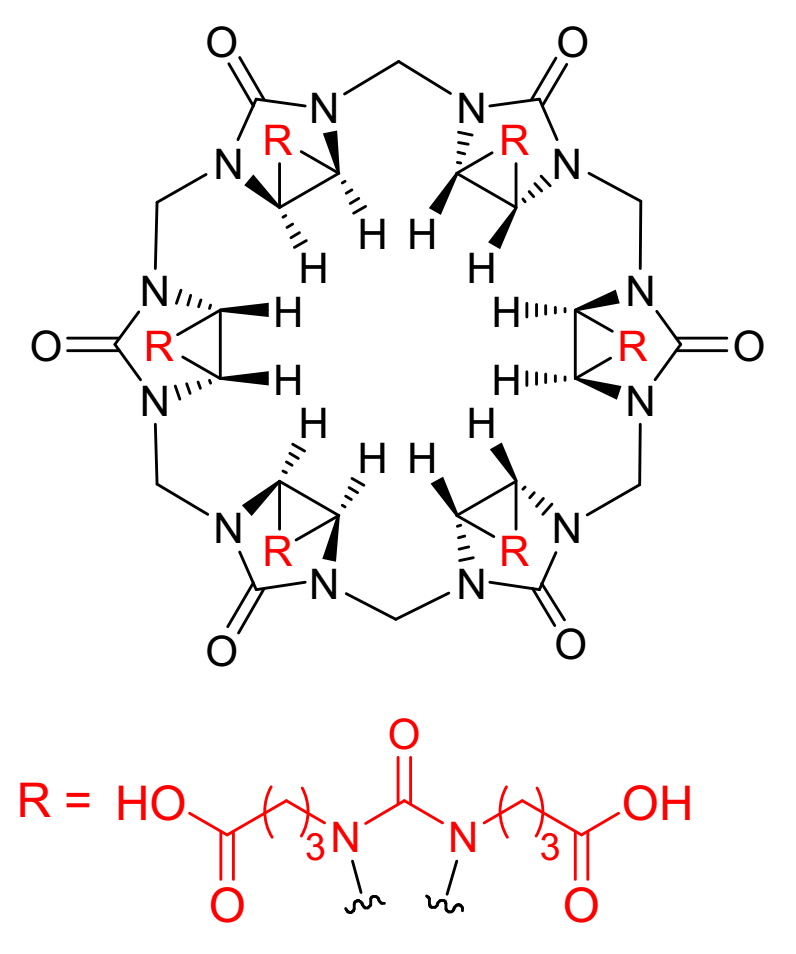Binding Properties
| 𝜈 | Molecule 2 : 1 Host | ||
| Ka = | 2.03⋅108 | M-2 | |
| Kd = | |||
| logKa = | |||
| T | 30.0 °C | ||
| Energy | kJ mol-1 | kcal mol-1 | |||
|---|---|---|---|---|---|
| ΔG | = | -48.21 | -11.52 |
These are the specifications of the determination of the experimental results.
| Detection Method: | Direct | ||
| Assay Type: | Associative Binding Assay | ||
| Technique: | Isothermal Titration Calorimetry | ||
| Molecule: | syringe | ||
| Partner: | cell | ||
| Cofactor: | cell | ||
Detailed information about the solvation.
| Solvent System | Buffer System | 30 mM potassium phosphate pH-8.0 |
| Solvents | water | |
| Source of Concentration | real | |
| Total concentration | 30.0 mM | |
| pH | 8.0 |
Please find here information about the dataset this interaction is part of.
| Citation: |
K. Sleziakova, M. R. Avei, A. E. Kaifer, V. Sindelar, SupraBank 2026, Binding of bambusuril with bipyridinium guests in water (dataset). https://doi.org/10.34804/supra.202109287 |
| Link: | https://doi.org/10.34804/supra.202109287 |
| Export: | BibTex | RIS | EndNote |
Please find here information about the scholarly article describing the results derived from that data.
| Citation: |
K. Sleziakova, M. R. Avei, A. E. Kaifer, V. Sindelar, Supramolecular Chemistry 2017, 30, 832–837. |
| Link: | https://doi.org/10.1080/10610278.2017.1395026 |
| Export: | BibTex | RIS | EndNote |
Binding Isotherm Simulations
The plot depicts the binding isotherm simulation of a 1:1 interaction of Bis Paraquat (9.852216748768472e-08 M) and Dodecakis(3‐carboxypropyl)bambus[6]uril (0 — 1.9704433497536944e-07 M).
Please sign in: customize the simulation by signing in to the SupraBank.





